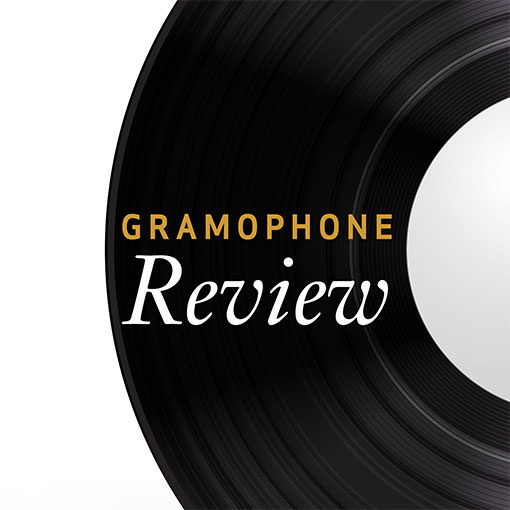Bergman The Singing Tree
View record and artist detailsRecord and Artist Details
Composer or Director: Erik (Valdemar) Bergman
Genre:
Opera
Label: Ondine
Magazine Review Date: 5/1993
Media Format: CD or Download
Media Runtime: 129
Mastering:
DDD
Catalogue Number: ODE794-2D

Tracks:
| Composition | Artist Credit |
|---|---|
| (The) Singing Tree |
Erik (Valdemar) Bergman, Composer
Anna-Lisa Jakobson, Princess I, Mezzo soprano Charlotte Hellekant, Witch, Mezzo soprano Dominante Choir Eeva-Kaarina Vilke, Solo Voice II Erik (Valdemar) Bergman, Composer Finnish National Opera Orchestra Kaisa Hannula, Princess Marianne Harju, Princess II Martti Wallén, Fruit Seller, Bass Peter Lindroos, King, Tenor Petri Lindroos, Servant II Petteri Salomaa, Prince Hatt, Bass Sauli Tiilikainen, Fool, Baritone Tapiola Chamber Choir Tom Nyman, Solo Voice; Servant I Tuula-Marja Tuomela, Solo Voice I Ulf Söderblom, Conductor |
Author:
Musically, this issue is a triumph: the magnum opus of one of the leading Finnish composers in an excellent and committed performance, captured in all its intricate detail by a remarkably clear and faithful recording. The Singing Tree is Erik Bergman's only full-length opera and, as fellow-composer Jouni Kaipainen comments in the booklet, is a ''grand synthesis'' of his life's work. Often it sounds like a compendium of the vocal and instrumental techniques that Bergman has developed throughout his long career (he is now 82) melded together by his vibrant and incisive musicianship.
The fable of the princess who may not see her husband's face is common to many cultures: Bo Carpelan's libretto uses a Swedish version but incorporates elements of many other stories, ancient and more modern. Prince Hatt, imprisoned by his mother, the Witch, is set free by a Princess who first communes with him via the song of the Tree of Life, which they both hear in dreams. Unlike many fairy-tale operas, Bergman and Carpelan lay bare the nightmare that exists at the centre of all fables; and as if to emphasize that this is not kids' stuff, the happy ending is marred by the blinding of the Princess through the Witch's dying curse.
My only reservation about The Singing Tree concerns dramatic pacing which, like the musical pulse, is unremittingly slow. A sequence of 22 tableaux divided into two acts (plus Prologue, Interlude and Epilogue), there is often insufficient variety between the scenes which makes the opera seem to be jogging on the spot. Individual tableaux are often effective in themselves but many take not very dissimilar routes to achieve common goals. Only two really dramatic moments alter the relief: at the climax of Act One, when the Princess is lured by the Witch to look upon the face of the sleeping Prince, and the final denouement itself when the Witch is destroyed by the power of Light.
Written in 1986-8, The Singing Tree is exactly coeval with Sallinen's Kullervo, already issued on CD by Ondine (8/92). This speaks volumes for the commitment, industry and musical culture of Finland and puts most other countries to shame. Where, for instance, are recordings of John Buller's Bakxai or Nicola LeFanu's Blood Wedding, Birtwistle's Gawain or Judith Weir's The Vanishing Bridegroom? Without doubt, Finland is the place to be for opera.'
The fable of the princess who may not see her husband's face is common to many cultures: Bo Carpelan's libretto uses a Swedish version but incorporates elements of many other stories, ancient and more modern. Prince Hatt, imprisoned by his mother, the Witch, is set free by a Princess who first communes with him via the song of the Tree of Life, which they both hear in dreams. Unlike many fairy-tale operas, Bergman and Carpelan lay bare the nightmare that exists at the centre of all fables; and as if to emphasize that this is not kids' stuff, the happy ending is marred by the blinding of the Princess through the Witch's dying curse.
My only reservation about The Singing Tree concerns dramatic pacing which, like the musical pulse, is unremittingly slow. A sequence of 22 tableaux divided into two acts (plus Prologue, Interlude and Epilogue), there is often insufficient variety between the scenes which makes the opera seem to be jogging on the spot. Individual tableaux are often effective in themselves but many take not very dissimilar routes to achieve common goals. Only two really dramatic moments alter the relief: at the climax of Act One, when the Princess is lured by the Witch to look upon the face of the sleeping Prince, and the final denouement itself when the Witch is destroyed by the power of Light.
Written in 1986-8, The Singing Tree is exactly coeval with Sallinen's Kullervo, already issued on CD by Ondine (8/92). This speaks volumes for the commitment, industry and musical culture of Finland and puts most other countries to shame. Where, for instance, are recordings of John Buller's Bakxai or Nicola LeFanu's Blood Wedding, Birtwistle's Gawain or Judith Weir's The Vanishing Bridegroom? Without doubt, Finland is the place to be for opera.'
Discover the world's largest classical music catalogue with Presto Music.

Gramophone Digital Club
- Digital Edition
- Digital Archive
- Reviews Database
- Full website access
From £8.75 / month
Subscribe
Gramophone Full Club
- Print Edition
- Digital Edition
- Digital Archive
- Reviews Database
- Full website access
From £11.00 / month
Subscribe
If you are a library, university or other organisation that would be interested in an institutional subscription to Gramophone please click here for further information.





